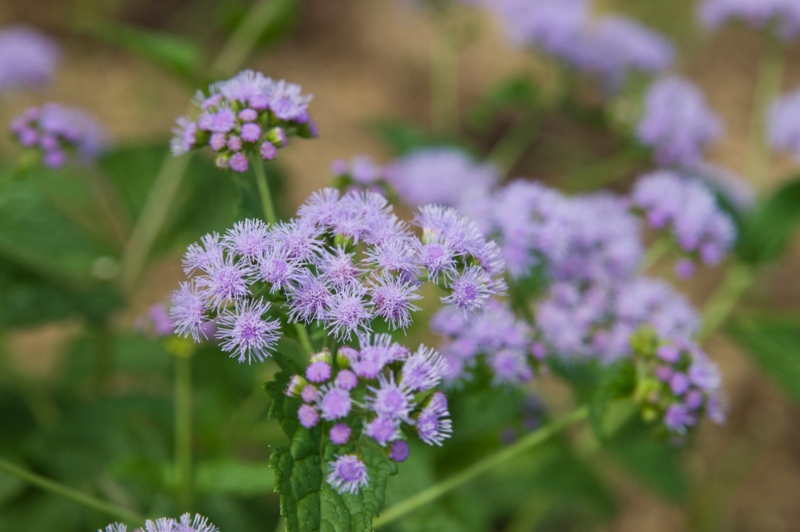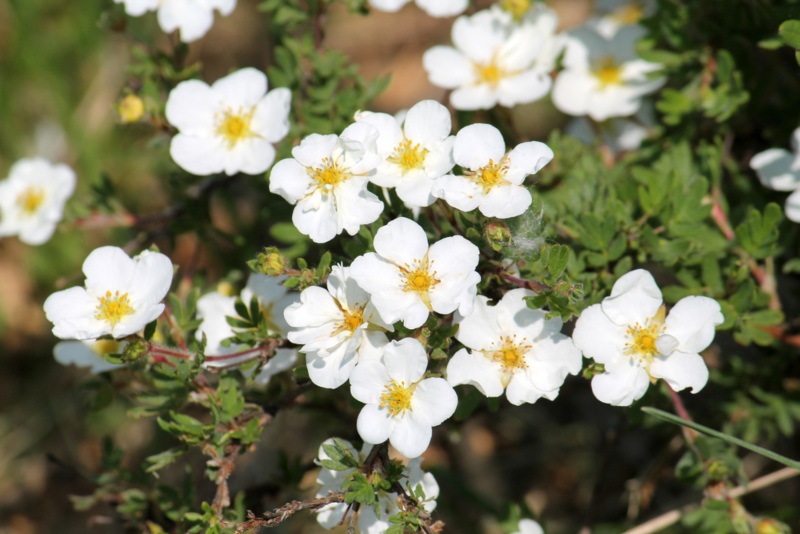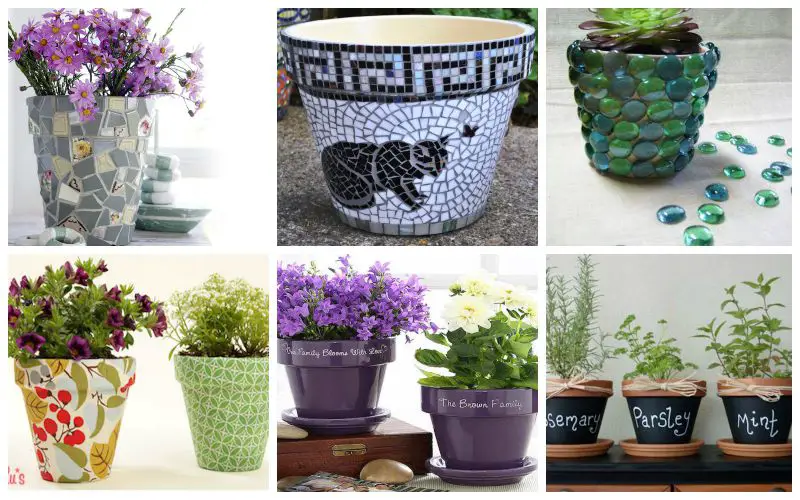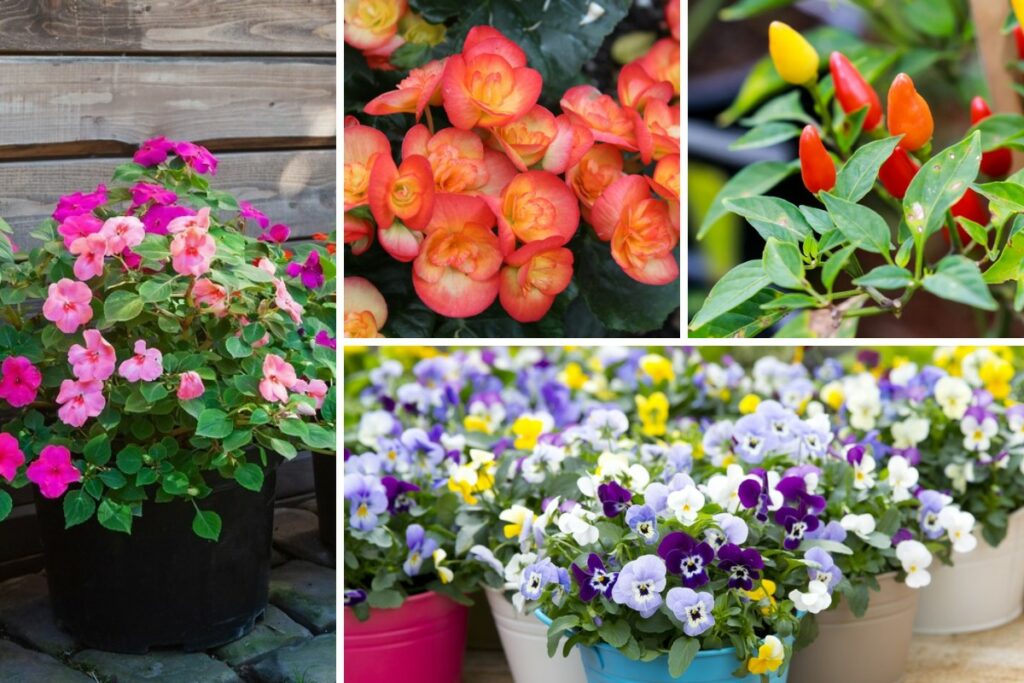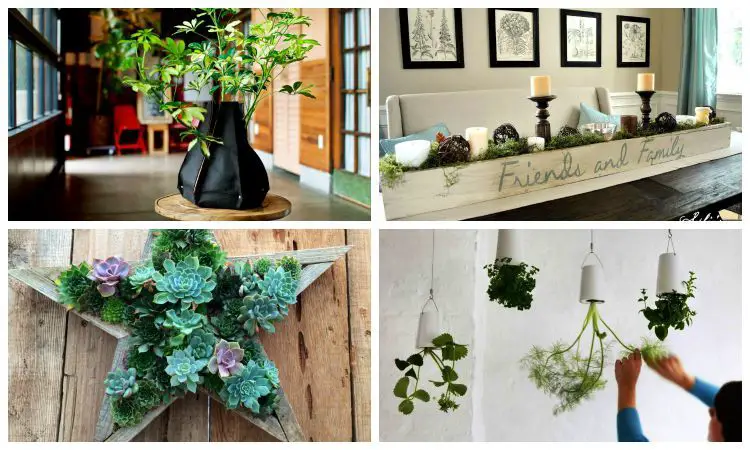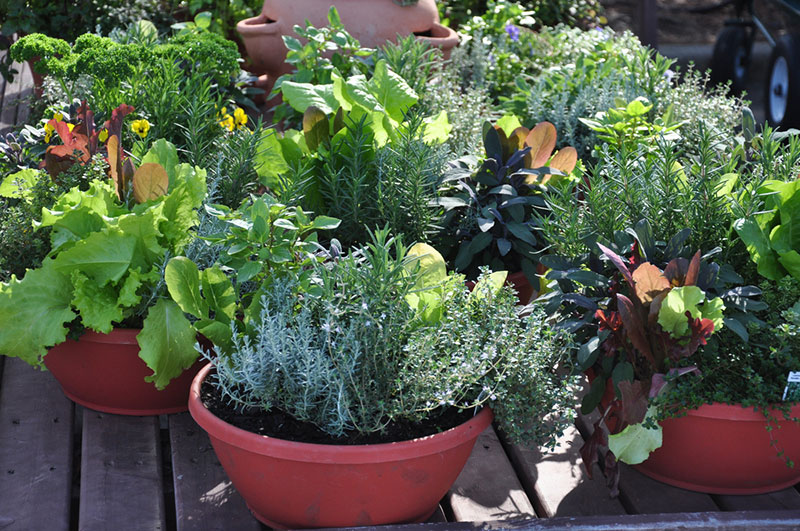
If you are limited on space or the soil in your yard is unsuitable for gardening, growing vegetables in containers may be the answer for you. Nearly any vegetable will thrive in containers if its needs are met. Fortunately meeting the needs of container-grown veggies isn’t difficult. Follow these tips for selecting and preparing containers for growing your vegetables this year.
Choosing a Container
Nearly any container can be used for container gardening except for treated wood and bins or buckets that have been used to hold chemicals as they may contaminate the soil and damage your plants. Options include plastic buckets, pails, bins and boxes. Wooden barrels or crates can also be used for containers.
Before you head out to buy new containers for your garden, look around the garage and shed for items you can recycle. If you don’t like their appearance painting the outside of them is always an option. Otherwise, you can find a wide assortment of containers for plants at your local home improvement store. For a less expensive option, visit your local dollar store and browse through the storage bins, baskets and buckets for containers for your veggies. Even tiered kitchen baskets can be used to plant herbs or salad greens.
The container you choose for your veggies must provide enough room for the roots to grow. Additionally, containers must be heavy enough to avoid toppling in the wind or from the weight of mature plants.
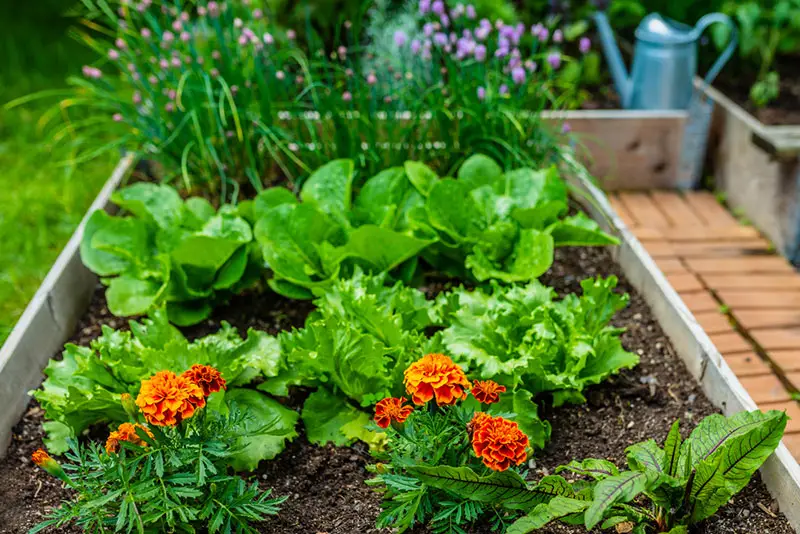
Follow these recommendations for pot size when choosing a container for your veggies.
- Salad Greens, Herbs, Beets and Radishes: 1-to-2-gallon container with a depth of 6 to 8 inches.
- Beans, Peas, Cucumbers: 3-to-5-gallon container with a depth of 12 to 18 inches.
- Peppers: 3-to-5-gallon container with a depth of 12 to 18 inches.
- Tomatoes: 5-gallon container with a depth of 18 to 24 inches.
- Corn: 15-gallon container with a depth of 12 to 16 inches.
- Potatoes 5-gallon container with a depth of 18 to 24 inches.
Adding Drainage
Adequate drainage for your containers is vital as veggies need soil that drains well and does not remain soggy. If you are recycling old containers for your container garden, drill holes in the bottom of the container to allow water to drain easily when you water your veggies.
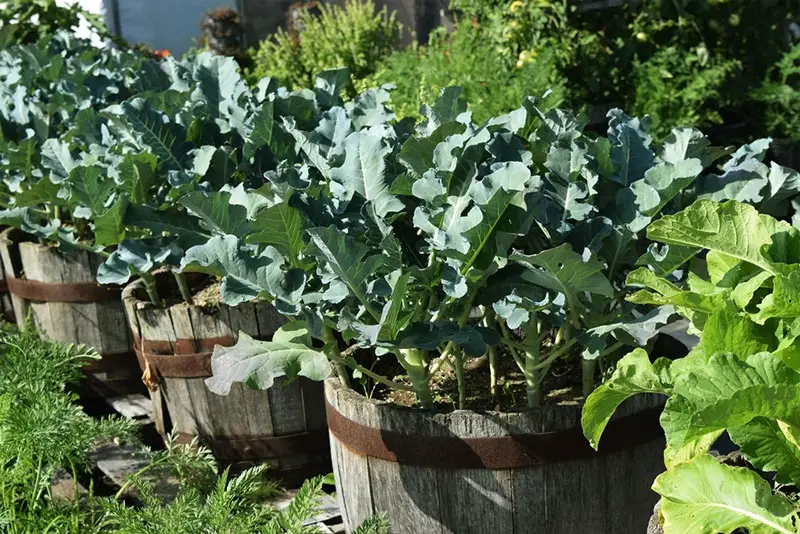
Making Soil Mixture
Garden soil or all-purpose potting soil is unsuitable for containers as it is too heavy and compacts easily with repeated watering. You can purchase soil designed for containers at your local home improvement center or you can make your own. There are several ‘recipes’ available online for making your own soil mix.
Penn State Extension recommends mixing equal parts sterilized garden loam (or compost), peat moss and perlite or vermiculite to make a potting mixture for your containers. Purchased sterilized garden loam is weed and contaminate free and will not introduce diseases to your potting mix. Using soil from your garden poses the risk of soil borne disease or pathogens.
Choosing a Location for Your Planters
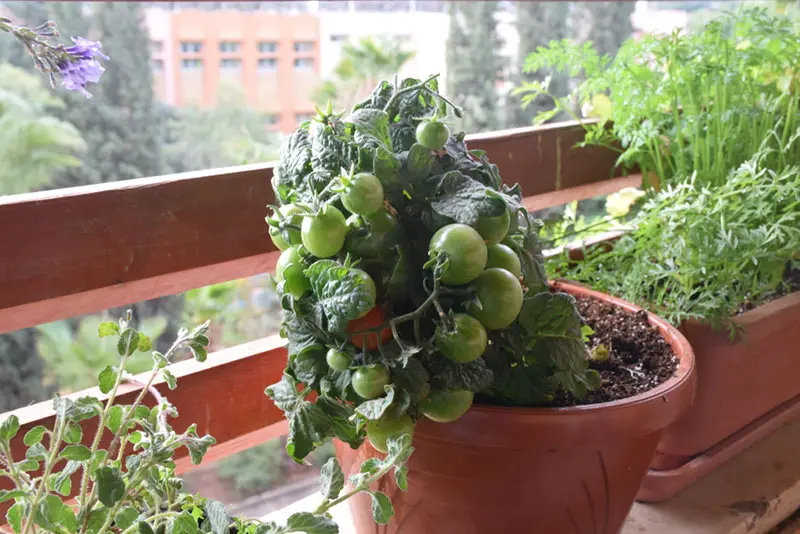
Nearly all vegetables prefer full sun, but there are some exceptions. Leafy vegetables like salad greens, spinach and chard will grow in partial sun and may even benefit from shade during the hottest part of the summer. Root vegetables, like potatoes, beets and carrots can also tolerate some shade. However, warm season veggies like tomatoes, cucumbers, peppers and squash need at least 6 to 8 hours of direct sunlight a day to thrive.
The weight and size of your container may also be limiting factors on where they should be located. Heavy containers ideal for lining a walkway may not be appropriate for the deck. Likewise, tall slender container may need to be placed against a wall or near a trellis to prevent toppling in the wind.
Planting Your Veggies
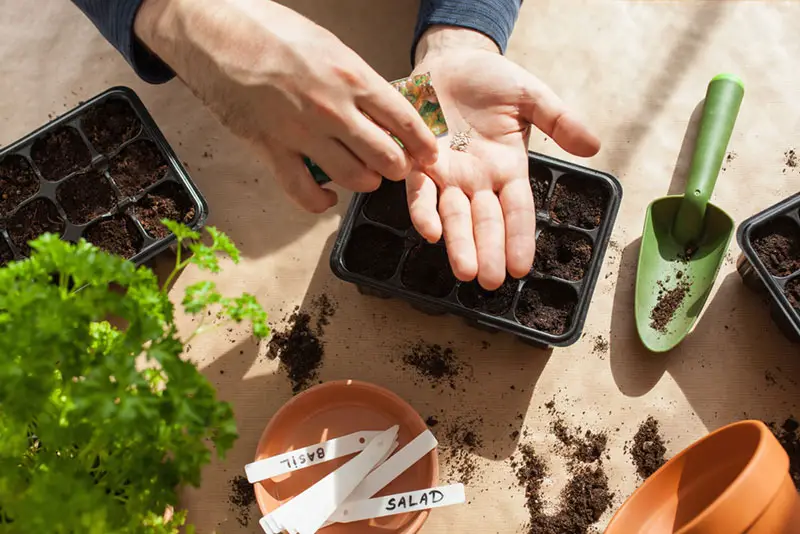
Many vegetables can be planted from seed directly in the container. In fact, some prefer to be planted in their permanent location and don’t like being transplanted. Quick growing veggies like salad greens, beets, peas, and radish can be planted as soon as the weather warms. Follow the planting instructions on the seed packet when planting seeds in containers.
Seedlings of warm-season veggies, like tomatoes, peppers, squash, beans and cucumbers, need to be planted after all danger of frost has passed in your area.
- Make a hole twice the size of the root ball of the seedlings you wish to plant.
- Position them to their original growing depth and firm the soil down firmly to secure them in place.
- Water them thoroughly and keep the soil moist until new growth appears, and the seedlings are established.
Watering the Containers
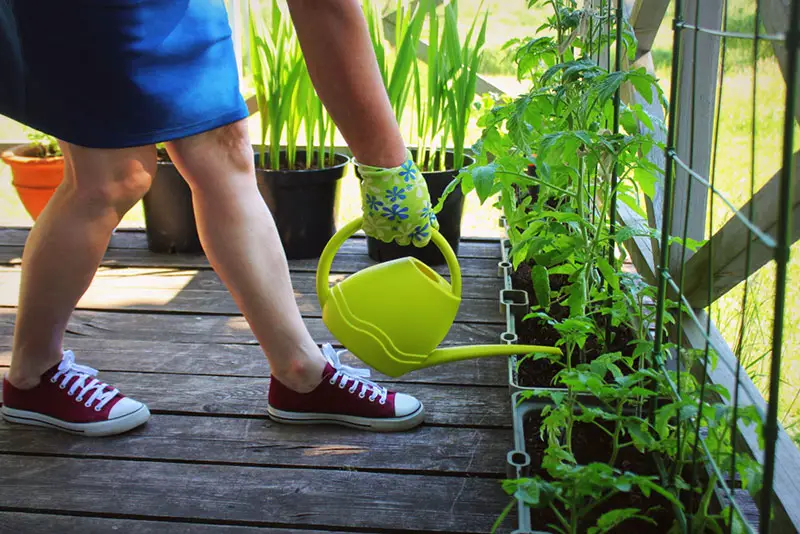
Vegetables grown in containers rely on you for their needs and adequate water is one of them. You will need to provide supplemental water to your plants on a regular basis. Because soil dries out quickly in containers during hot weather you may need to water your containers every day as the plants mature and the weather gets warmer.
Water your plants until the soil is saturated and water runs freely through the bottom of the container. Check the soil daily for dryness. If the soil feels dry 1-inch below the surface your plants need watering.
Fertilizing your Veggies
Plants in containers require more frequent applications of fertilizer than those grown in the ground as fertilizer leaches through the bottom of the pots with watering. Apply a water-soluble fertilizer designed for tomatoes or vegetables every 10 to 14 days throughout the summer. This replaces lost nutrients from frequent watering and provides your vegetables with the nutrients they need to thrive.
You may be surprised to discover how many veggies you can grow in a small space by using containers. Don’t be afraid to tuck buckets and containers into unused spaces in your yard. Line the steps, place them on the deck or balcony or even hang them to create a lush garden with fresh veggies at your fingertips.

